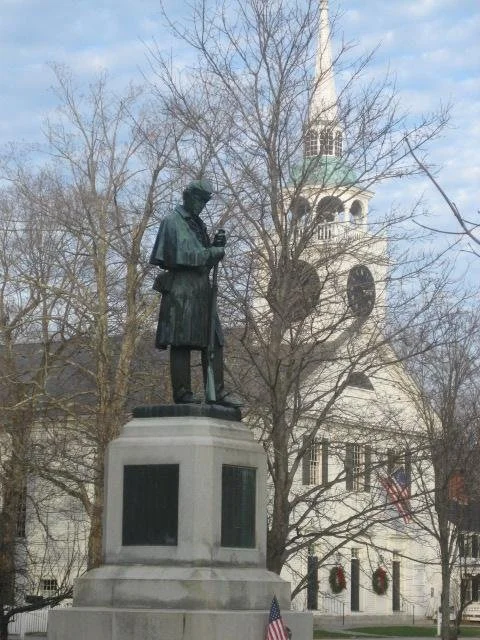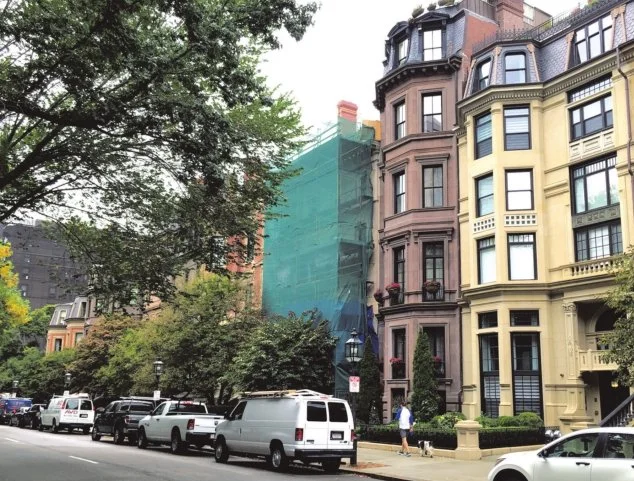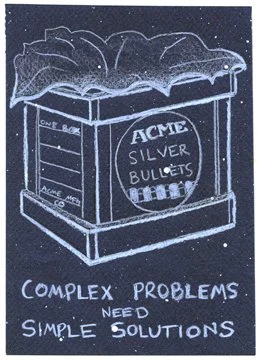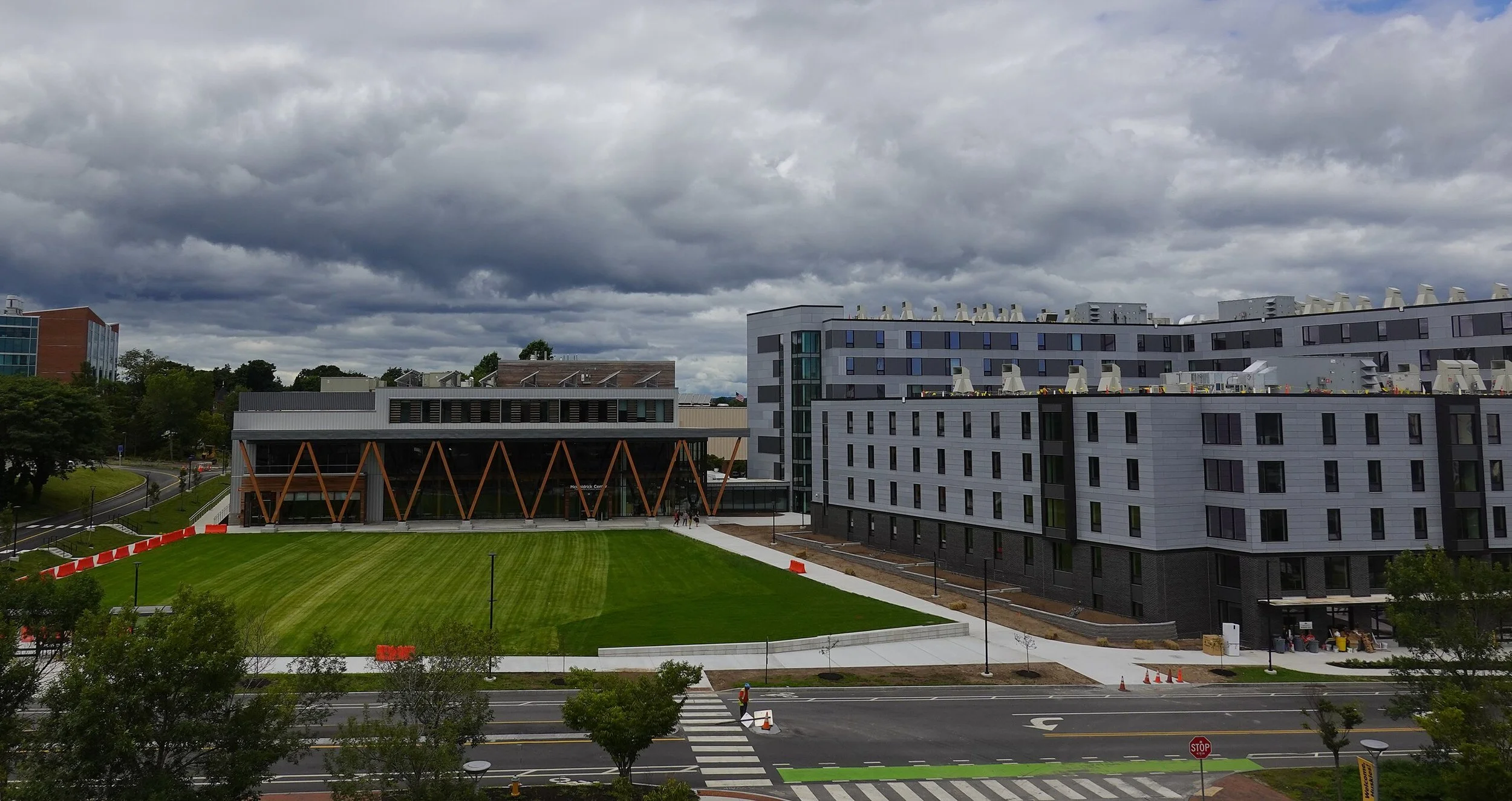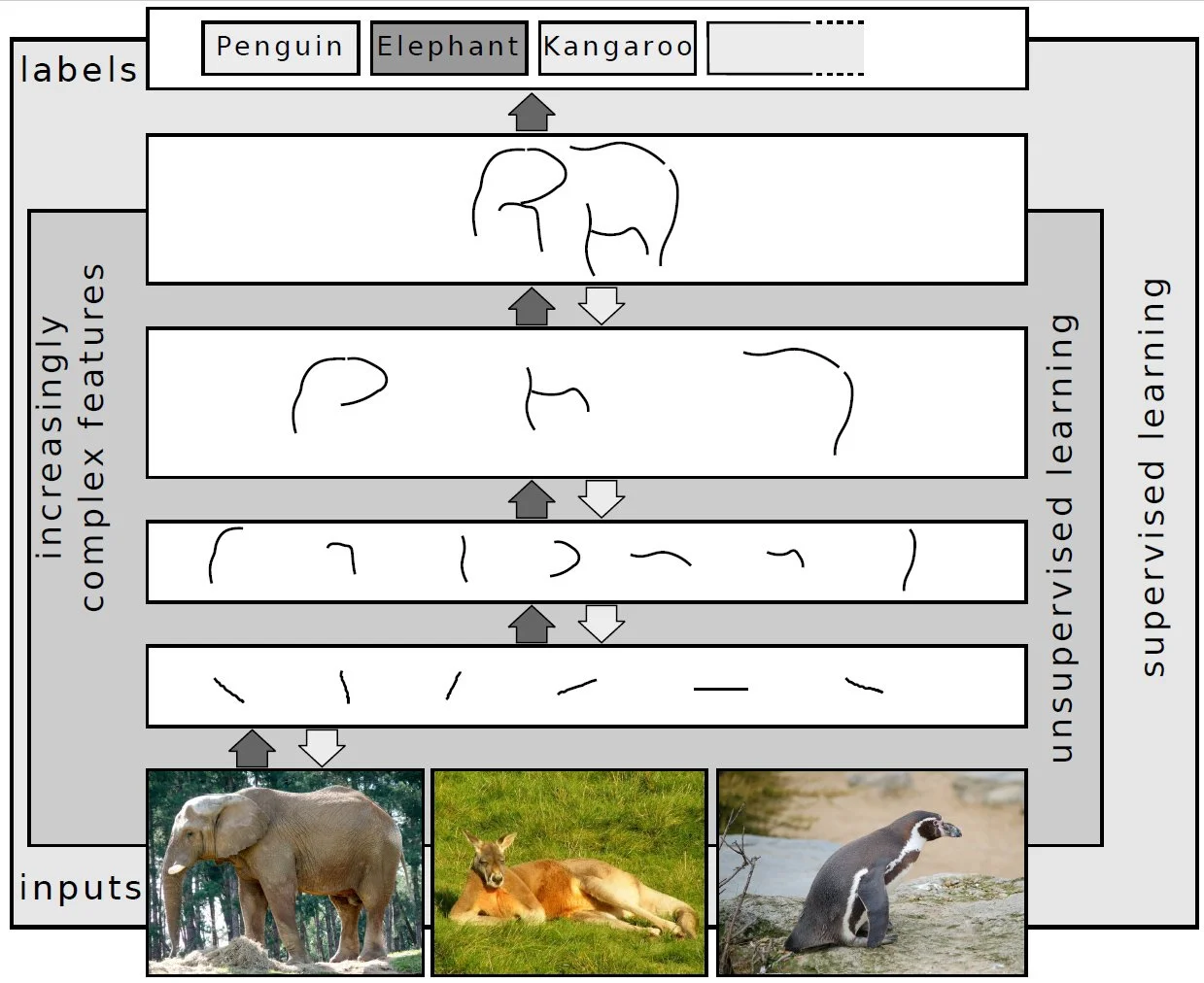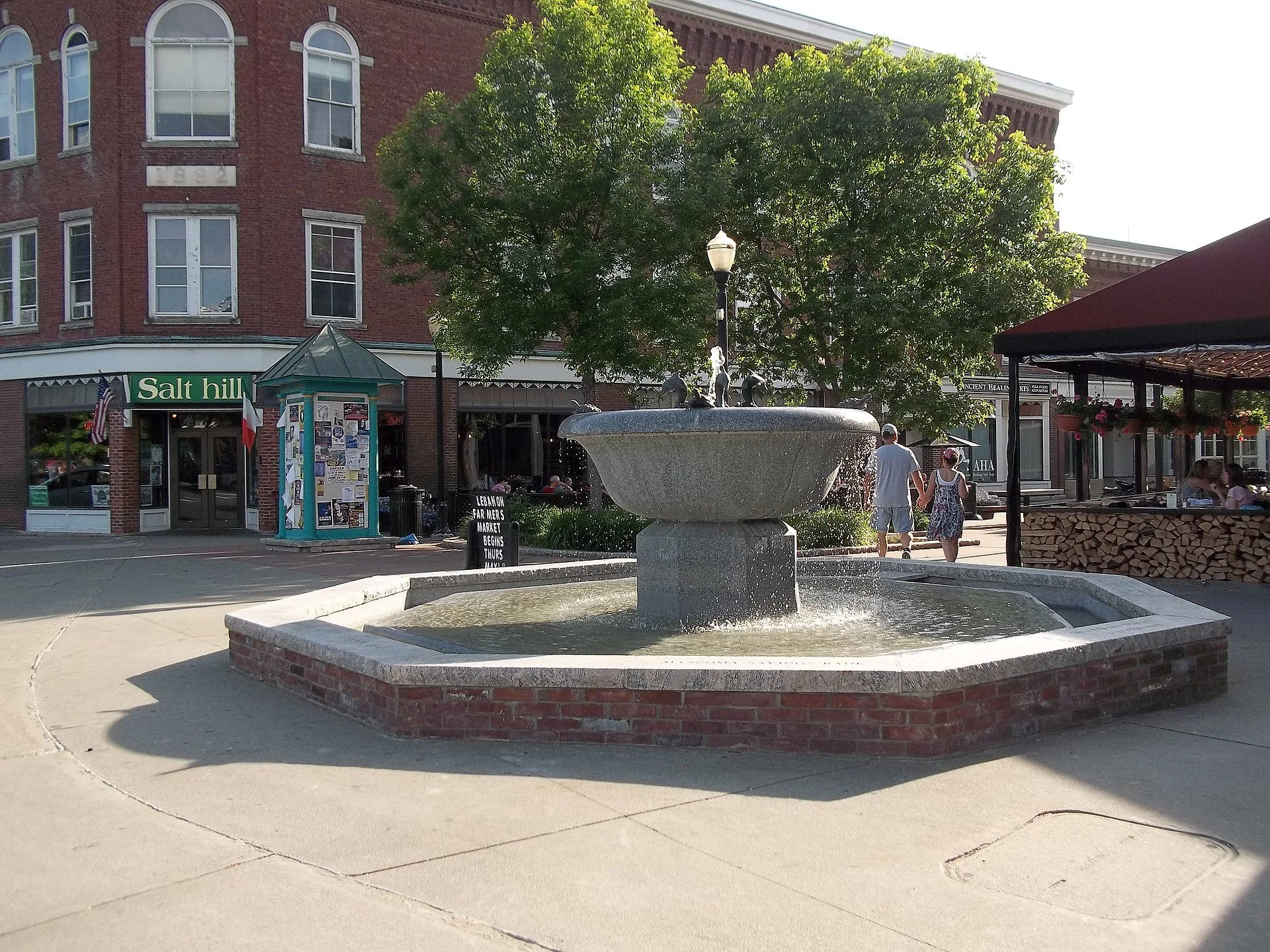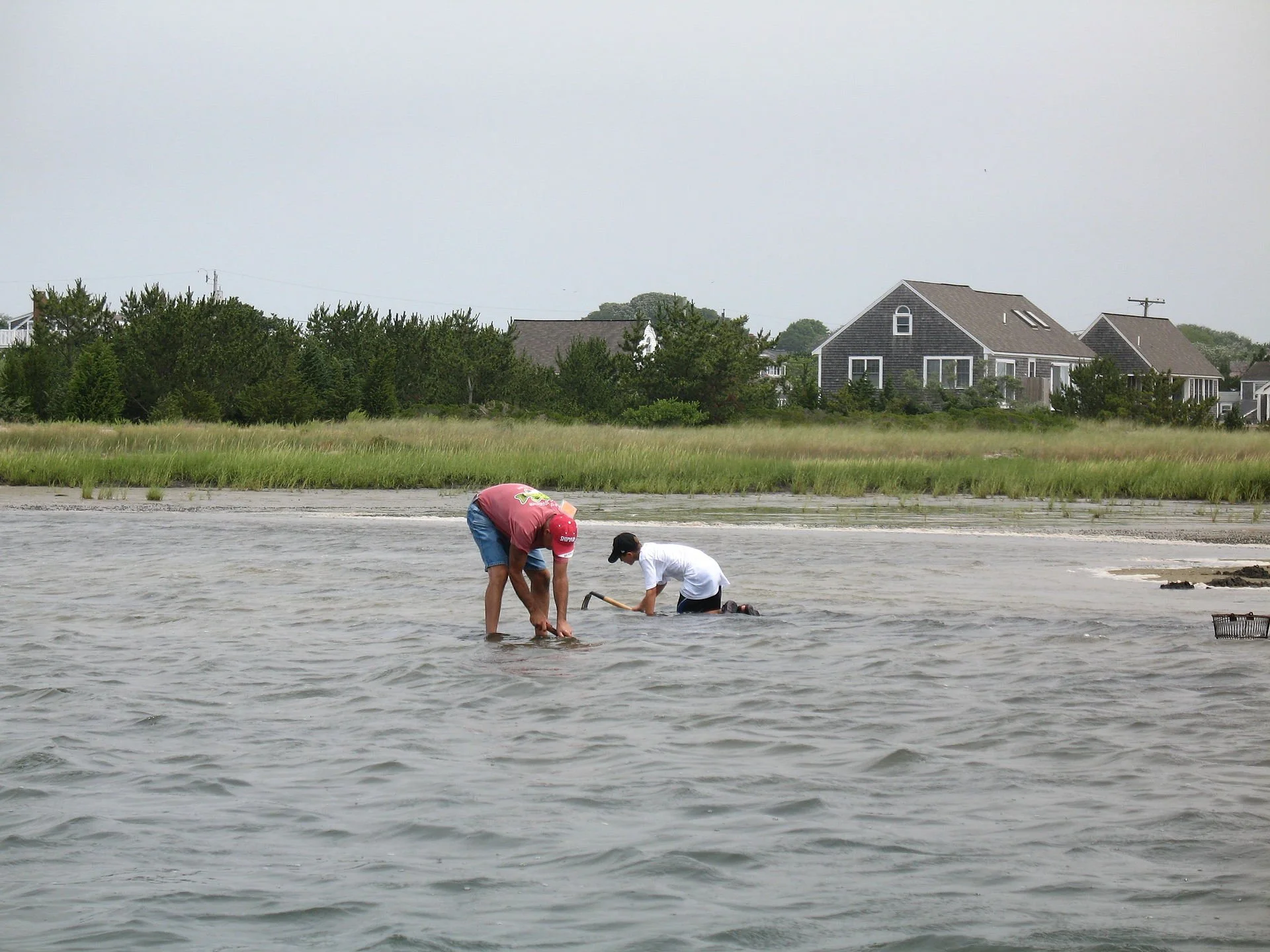
Enough to start working on a canoe?
Painting by Elaine Farmer, the Amherst, N.H., based painter who owns White Birch Fine Art.
Birchbark canoe at Abbe Museum, in Bar Harbor, Maine
— Photo by Billy Hathorn
At the Amherst, N.H., common, with the sort of Civil War statute you see in so many New England towns.
Chris Powell: Misappropriating flagpoles for proselytizing
The “Christian flag’’ at issue
A “Rainbow” or “Pride’’ flag promoting LGBT interests
MANCHESTER, Conn.
Misappropriation of government flagpoles for political purposes continues in Connecticut. Torrington Mayor Elinor C. Carbone has approved a request to fly a Christian flag at City Hall for two weeks. It's part of a national campaign to urge people to go to church, particularly Christian churches.
This has commandeered the government for religious proselytizing, the sort of thing done in medievally totalitarian countries.
Of course, most recent flag controversies in Connecticut have involved commandeering the government to celebrate certain sexual orientations, as if sexual orientation isn't as much a personal matter as religion and as if Connecticut law doesn't already guarantee freedom of sexual orientation as well as religion.
Such use of government flagpoles is said to advance "inclusiveness" but it is actually divisive. Not everyone is Christian and no one needs to be told by government to go to church. Such an intrusion into personal matters is offensive.
As for the sexual-orientation flags -- “pride” flags -- their advocacy extends far beyond equal rights. They are construed to support transgenderism and the overthrow of gender privacy in bathrooms and equal opportunity for women in competitive sports. Most people oppose those things.
Additionally, as Torrington and many other municipal governments should know, courts have ruled that if government allows outside groups to use its flagpoles, it may not discriminate. If a government grants one request, it must grant all requests, as any refusal is unconstitutional censorship. This is how manger displays on town greens and public parks at Christmastime have compelled acceptance of atheist displays.
What will happen when someone wants to fly a Ku Klux Klan or a Nazi flag at City Hall, or flags advertising car dealers, supermarkets, or political candidates? The Trump 2024 flags are ready to go.
The only flags that can be "inclusive" on government flagpoles are government's own -- flags that fly for everybody.
xxx
Also being misappropriated in Connecticut are the electricity rates charged by utility companies.
At the direction of the state Public Utilities Regulatory Authority, the state's two major electricity distributors -- Eversource and United Illuminating -- are offering discounts to poor customers who are receiving financial support from state government like Medicaid insurance and food subsidies.
Norwich Public Utilities, the electric company owned by that city, is considering its own program of discounted rates for poor customers, the discounts to be determined according to household size and income.
Such discounts will be financed by customers who don't get discounts.
The intent here isn't necessarily objectionable but the method is. For these discounts will be public welfare expenses and as such they should be borne plainly through general taxation, not hidden in the bills of other electricity customers.
Already 15 to 20 percent of the charges to electricity customers in Connecticut arise not from the cost of providing electric power but from various social programs and policies state government has decided to finance through electricity bills so resentment will fall on the utility companies rather than elected officials. Connecticut faces nearly the highest electricity costs in the country in large part because state government hides so much of its own costs in electricity bills.
This doesn't mean that electric utilities shouldn't economize. It means that elected officials are grossly hypocritical when they accuse the utilities of overcharging even as state government does more overcharging for electricity than the utility companies do.
PICKLEBALL TAKES PRIORITY: Amid brazen crime and worsening poverty, mental illness, drug addiction and homelessness, Connecticut seems to be falling apart, as does the country itself. But last week Gov. Ned Lamont took a break from those problems to help open the four new pickleball courts in Glastonbury.
The courts were financed with state and federal money, as well as municipal money. Glastonbury, prosperous and well-insulated from social problems by its zoning regulations, could have covered the whole cost itself, without state and federal aid, if the courts were really essential to the town's well-being. But setting humane and sensible priorities in government can be such a drag.
Chris Powell has written about Connecticut government and politics for many years. (CPowell@cox.net)
Fall fishing outing
Close-up of smelt for sale at a seafood market
—Photio by ChildofMidnight
Adapted from Robert Whitcomb’s “Digital Diary,’’ in GoLocal24.com
September and October remind me of smelt fishing with a bamboo pole and two hooks on a spreader on a dock in the harbor down the wooded hill from our house. The sky always seemed to be clear, and the cool wind from the east included a whiff of the marsh along the channel to the harbor.
It was an exhilarating early fall ritual coming as the maples started to turn bright colors and the apples were at their peak.
Smelt are delicious fried with a little corn meal, lemon and butter.
Hit this link for a few pointers.
Bumping bikes
“Propelled” (pastel), by Plymouth, Mass.-based Jory Mason, in the group show “Signature Strokes,’’ at the South Shore Art Center, Cohasset, Mass., through Oct. 28., in collaboration with the Pastel Painters Society of Cape Cod and juror Lisa Flynn.
The arts center says the show features pastel artwork of “everything from natural scenes of plants, water and delicate flowers to subjects including men at work repairing a city street and the rough moorings of a ship.’’
Recreation of Plimoth Plantation, at Plymouth
— Photo by Marco Almbauer
Trying to keep up grand appearances at years roll by
In Boston’s Back Bay neighborhood, an old house is draped while being repaired.
Old building materials, new insulation standards and consistently wet summers can spell trouble for many of Boston's historic homes, contractors and experts said, so property owners need to be on the lookout now for warning signs.
Neighborhoods like the Back Bay, Beacon Hill and South End are known for historic brownstones and rowhouses, but buildings from a century ago weren't constructed according to current codes.
In particular, lintels which support walls above doors and windows, may have been made with steel, but what was state-ofthe-art then is woefully out of date now, according to John Holland of Holland & Co., who has decades of construction and rehab experience.
"When steel lintels were introduced in the turn of the century, they were new material, but they weren't galvanized," Holland said, noting that kind of metal is susceptible to rust and water damage, and that can lead to significant repairs as water freezes and expands over time, damaging stone, and lintels.
To read the whole article, please hit this link.
View (1858) from the Massachusetts State House westward along the Mill Dam (now Beacon Street), which separated Back Bay (left) from the Charles River. The Mill Dam and the Cross Dam (in distance is the modern Massachusetts Avenue-Kenmore Square area, with mills barely visible near juncture with the Mill Dam). They were part of an attempt to derive power from tides. Trees along north-south waterline represent western boundary (now Arlington Street) of the Boston Public Garden.
The Back Bay was built on land reclaimed from the Charles River basin. Construction began in 1859, as the demand for luxury housing exceeded the availability in the city at the time, and the area was fully built by around 1900. It remains one of Boston’s richest neighborhoods
The quiet way
“Raking leaves can be totally Zen,’’ by Adam Blue, in his show “Adam Blue: Astroexplorer — A Guide to the Heavens,’’ at Maine Street Museum, White River Junction, Vt., through Nov. 18.
The museum says:
The exhibition provides concise and sometimes blunt discourse on current environmental, political and social issues, as well as pop culture.
Lillian Gish on the White River, at White River Junction, being filmed for the 1920 silent film Way Down East.
White River Junction in 1989. It was a major railroad center.
Llewellyn King: The folly of Biden on the picket line
The Cambridge Assembly building, which started as a Ford Motor Co. factory in Cambridge, Mass., which opened in 1913. It had the first vertically integrated assembly line in the world. It was replaced in 1926 by the Somerville Assembly. The plant was later reused by Polaroid Corp., once Greater Boston’s high-tech star, and is now owned by the Massachusetts Institute of Technology.
This is a revised version of a column posted earlier this week.
WEST WARWICK, R.I.
The United Auto Workers strike against the Big Three U.S. automakers, Ford, General Motors and Stellantis, formerly Chrysler, no matter the merits of the workers’ yearnings, shouldn’t have happened. Once it got going, it shouldn’t have lasted. The White House should have spoken.
Already there is damage. Ford has “paused” plans to build a $3.5-billion battery plant in Michigan. If the strike drags on, or if the industry bows to the most damaging demand in the union’s wish list (a 32-hour work week), then the production of EVs and battery leadership will be ceded to other countries. U.S. automakers’ dependence on China — the world ’s top battery maker for EVs — will continue.
The U.S. auto industry is starting its EV surge behind others, and it will suffer mightily if the UAW doesn’t return to work.
In this circumstance, with so much at stake, it would be reasonable to expect President Biden to have both sides closeted at Camp David and to be “knocking heads together.”
The president is the ultimate arbitrator, the one we look to for guidance and to tell us what is best. Yet, instead of bringing both sides together in the national interest, Biden has chosen sides, and chosen to walk the picket line.
Even Steven Rattner, the Democrats’ mechanic when it comes to auto issues, has said this is wrong.
Rattner — whom I caroused with when he was reporter at The New York Times, before he became fabulously rich on Wall Street — is through-and-through a Democrat and one of the party’s intellectuals. In 2009, he authored the rescue plan for the auto industry. At that time, it looked like General Motors and Chrysler were headed for permanent closure.
What was Biden thinking? Why did he abandon the high ground of the presidency?
How can Biden now sit down and bring both sides to the table to negotiate in good faith? He has already declared his allegiance to one.
I believe in the value of unions: guarantors of middle-class life for many. I am not just saying that. I have lived it.
I was once the president of the Washington-Baltimore Newspaper Guild. I am very proud of the financial settlement we got on my watch for reporters and editors at The Washington Post. It was a breakthrough: a 67 percent pay raise over three years.
The newspaper industry was very prosperous at the time, whereas reporters and editors were poorly paid. It was long before the internet would crush the industry, reducing it to its present state of poverty and collapse. We were asking for some of the goodies we had created. There was no danger of The Washington Post moving to China.
Sadly, the unions have been slow to adjust to new realities. They are stuck in a mindset of the days when we were a country of industrial robber barons and industrial unions made sense. Now we are mostly a service economy desperately seeking to reindustrialize. EVs are important in that effort.
I ran into outdated union thinking head-on at the Washington-Baltimore Newspaper Guild. Although we were largely autonomous, we were a chapter of the American Newspaper Guild, our head office.
I had a proposal for simplifying work schedules for editorial staff. My proposal was that editorial staff work three days — 10 to 12 hours a day — and have three days off. My colleagues loved it, The Washington Post management saw it as a solution to overtime and weekend staffing problems. I had seen it work well at the BBC in London, where it was standard practice.
The ANG head office went berserk: It was a betrayal of union history and the “model” contract, written by the legendary reporter, columnist and ANG founder, Heywood Broun, in 1935. In ongoing negotiations with The Post, I dropped the proposal to everyone’s regret. That kind of legacy thinking is what has been killing unions and unionism.
There is a backstory to the Hollywood writers’ strike and the auto workers’ stoppage: artificial intelligence. It will change lives and is a threat to the kind of work unions have protected.
Biden might well have chosen the strikes as a chance to bring about settlements, but also to begin a national dialogue on AI.
Instead, Biden walked a picket line, resolving nothing.
Llewellyn King is executive producer and host of White House Chronicle, on PBS. His email is llewellynking1@gmail.com and he’s based in Rhode Island and Washington, D.C.
At the University of Southern Maine, ethics training in artificial intelligence
The McGoldrick Center for Career & Student Services, left, the Bean Green, and the Portland Commons dorm at the University of Southern Maine’s Portland campus.
— Photo by Metrodogmedia
AI at work: Representing images on multiple layers of abstraction in deep learning.
— Photo by Sven Behnke
Edited from a New England Council report:
“The University of Southern Maine (USM) “has received a $400,000 grant from the National Science Foundation to develop a training program for ethical-research practices in the age of artificial intelligence.
“With the growing prevalence of AI, especially such chatbots as Chat-GPT, experts have warned of the potential risks posed to integrity in research and technology development. Because research is an inherently stressful endeavor, often with time constraints and certain desired results, it can be tempting for researchers to cut corners, leaning on artificial intelligence to imitate the work of humans.
“At USM’s Regulatory Training and Ethics Center, faculty are studying what conditions lead to potential ethical misconduct and creating training sessions to make researchers conscious of their decisions and thoughts during their work and remain aware of stressors that might lead to mistakes in judgment. Faculty at USM believe this method will allow subjects to proactively avoid turning to unethical AI assistance.
“‘We hope to create a level of self-awareness so that when people are on the brink of taking a shortcut they will have the ability to reflect on that,’ said Bruce Thompson, a professor of psychology and principal at the USM ethics center. ‘It’s a preemptive way to interrupt the tendency to cheat or plagiarize.’’’
Anxiety in New Haven
“Toward the Forest “ (colored woodcut), by Norwegian artist Edvard Munch (1863-1944), in the show “Munch and Kirchner: Anxiety and Expression,’’ at the Yale University Art Gallery, New Haven, Conn., Feb. 16-June 23, 2024.
“Head of Dr. Frédéric Bauer’’ (colored woodcut), by German artist Ernst Ludwig Kirchner (1880-1938).
The gallery says:
“Featuring more than 60 works on paper, this exhibition is the first to examine the prints of Edvard Munch alongside those of Ernst Ludwig Kirchner, elucidating the fascinating overlaps in their creative output and personal biographies and demonstrating how these artists suffered from—and attempted to cope with—the anxieties of their age.’’
Aliens in the sand
Sunset from Menemsha
“Menemsha {on Martha’s Vineyard}: An old Native American word freely translated as ‘place where demented aliens gather to applaud the setting of the sun while eating supper in the sand.’’’
— Arnie Reisman, in On the Vineyard II (1990)
Embrace contradictions
From Joan Feirabend’s show “Multitudes,’’ at AVA Gallery and Art Center, Lebanon. N.H., Oct. 6-Nov. 4.
The gallery says:
“For thirty-two years, art has been Joan Feierabend’s daily practice, ‘I have long recognized that my paintings are wiser than I am. When a painting tells me where it wants to go, I do my best to follow.’ Working with multiple layers, she tinted each surface with color and removed paint by pressing a crumpled cloth onto the surface, creating a sort of ‘blot’– an interruption akin to the way unforeseen events can imprint a life. Each painting took many days of layering in this way. Materials used include acrylic paint, ink, pencil, colored pencil, charcoal, pastel, and gold leaf. Her tools were brushes, spatulas, pens, stencils, tape, sponges, wadded cloth, paper, and baby wipes.
“Fond of the verse, ‘I contain multitudes,’ in Walt Whitman’s poem, ‘Leaves of Grass', Feierabend believes this to be true of us all. ‘We all contain contradictions…the complexity that every human being brings to the art– including the artist, speaks to our unique selves.’ She recognizes that viewers may experience multitudes of contradictions while making selections as they will no doubt waver between the diverse choices offered.’’
Fountain in downtown Lebanon
— Photo by Artaxerxes
David Warsh: Dorchester's weekly paper plows on through the decades
SOMERVILLE, Mass.
Rupert Murdoch is stepping down as chairman of Fox and News Corp, having built the little Australian newspaper he inherited at the age of 21 (The News of Adelaide, circulation 75,000) into a global multi-media complex of enormous political influence. He is to be succeeded by his elder son.
Myself, I have been preoccupied recently with the saga of The Dorchester Reporter, which celebrated the 40th anniversary of its founding with an ebullient party in Boston on Sept. 14.
That “every banker has one good idea” is an old-time industry joke. Ed Forry’s good idea was to get out of the business. In 1983, at age 39, with banking deregulation accelerating, he quit his $24,000-a-year job as a savings bank executive to found a community newspaper in Boston’s largest neighborhood. Dorchester was then recovering from a decade of white flight to the suburbs,
Forry had some experience to start with: confirmed in St. Gregory’s Parish, he had graduated from Boston College High School and Boston College. As a community activist, he had written a column for the Dorchester Argus-Citizen, with which Forry had created a profitable yearbook business. His wife, Mary Casey Forry, would be an all-in partner. The couple had two young children and $5,000 in the bank.
The Reporter circulated monthly for several years. At first, advertising paid the way. The monthly went weekly, paid subscriptions were introduced, circulation grew. There were hard times. In 1993, as recession lingered, Forry laid off the entire staff of nine. Mary Forry died in 2004. By then, son Bill had joined the business, to become, eventually, executive editor and publisher. He married Linda Dorcena Forry, a Haitian-American who won election to the Massachusetts House of Representatives in 2005, then moved on to the state Senate, where she held a seat until 2018. For an account of those first 25 years, read the story by Boston Globe columnist Jack Thomas.
What is the business worth today? Decent livings for its eight fulltime staffers, paid gigs for its regular lineup of columnists and critics, and opportunities for interns and freelance writers. The paper has disproportionate political influence —-Boston Mayor Michelle Wu and U.S. Sen. Ed Markey spoke at the party — and retained earnings, and has considerably enhanced Dorchester pride.
xxx
In 1963, at the opposite end of the enterprise spectrum, a married couple of lawyers from Brooklyn saw promises in the California building boom and purchased the Golden West Savings and Loan Association in Oakland. In a go-go market of 1968, they made a public offering, Over the next 40 years, Herbert and Marion Sandler ran the most successful residential-mortgage lender in the country, until they sold the firm in 2006 at the top of the market for $24 billion to a North Carolina bank. Widely blamed – in their view unfairly – for the subprime housing-mortage crisis, they commenced a long-planned entry into the philanthropy business.
Among many other overtures, they called Paul Steiger, who for 16 years had been editor of The Wall Street Journal, which was just the being acquired by Rupert Murdoch. The result, in short order, was ProPublica, with an annual budget of $10 million, for the practice of WSJ-style investigative journalism.
Steiger hired as his successor Stephen Engleberg, an 18-year veteran of The New York Times. Effective fund-raising raising increased the annual budget to $40 million. So with a staff of a hundred or so well-seasoned journalists, ProPublica has established itself as the most successful of philanthropically endowed news organizations that have arisen among the ruins of the old advertising-supported metropolitan print press.
What’s the second-best nonprofit news organization? National Public Radio, at least in my view. And though it is reasonably well endowed, it has recently beginning a new fund-raising campaign. Lacking the same marriage of top newspaper cultures, its enterprise ventures in news are somewhat lower-key. And lacking undisputed foundational principles, it is susceptible to the regular political tempests that afflict Washington D.C.
xxx
Now back to Murdoch. How did he do it? Mostly by buying newspapers properties in down markets, then building them up experimentally instead of stripping them down. Fox News, which he founded in 1996, with former Richard Nixon pollster Roger Ailes, was a particular success; MySpace, an early competitor to Facebook, didn’t fair nearly as well.
Murdoch, 92, and in good health, has put his first-born son, Lachlan, in charge of all of the empire. But further struggles maybe in store. The mogul has three other children; they are entitled to equal shares under terms of his will. The conglomerate can be disassembled and shared out. But the conglomerate’s Wall Street Journal will probably power on.
That in turn leads to The Washington Post. When Donald Graham sold his family-controlled newspaper to Amazon founder Jeff Bezos for $250 million, in 2013, it was for far less than might have been offered by other bidders. Why was that? Consider that as one of the world’s richest men, Bezos possessed both the means and the moxie to restore one of America’s three leading newspapers to robust good health. Yet it can’t have escaped Graham’s attention, either, that Bezos has four children. Thus the Post’s independence will be preserved well into the future. That seems to have been a central aim of the public-spirited Graham.
Finally, that leads back to Boston. When the New York Times Co, sold The Boston Globe to Boston Red Sox owner John Henry, in 2012, for $70 million, having mismanaged the property for more than a decade, the direction of the paper itself fell to Henry’s wife, Linda, a native Bostonian. She has managed to keep it not just afloat, but interesting. It is profitable, she says, though print circulation continues to decline.
At a Globe conference on the new business last week, she spoke proudly of new bureaus in Rhode Island and New Hampshire. We’re not interested in becoming a national [paper],” she told listeners, “but as there’s been a decline in smaller regional places, we’re trying to fill that gap.”
In Dorchester, meanwhile, the money comes from putting newsprint on the front porch. The Dorchester Reporter probably out-influences the old Boston Herald, once owned by News Corp and now operated out of suburban Braintree by Media News Group, and, at least in municipal politics, often rivals The Globe itself.
David Warsh, a veteran columnist and an economic historian, is proprietor of Somerville-based economicprincipals.com, where this column originated.
Economicprincipals.com is a reader-supported publication. To receive new posts and support Mr. Warsh’s work, consider becoming a free or paid subscriber.
Gone
Cellar hole in the former town of Dana, Mass.
“Back out of all this now too much for us,
Back in a time made simple by the loss
Of detail, burned, dissolved, and broken off
Like graveyard marble sculpture in the weather,
There is a house that is no more a house….’’
— From “Directive,’’ by Robert Frost (1874-1963). To read the whole poem, please hit this link.
Edited from a Wikipedia entry:
Site of what had been the town common of Dana. Formed from parts of Petersham, Greenwich and Hardwick, it was incorporated in 1801. The town was disincorporated on April 28, 1938, as part of the creation of the Quabbin Reservoir, the water supply of much of Massachusetts. Upon disincorporation, all of the town went to Petersham. The majority of the land of the former town is still above water.
— Photo by John Phelan
Stick to funerals
Beer Street and Gin Lane (1751), by English painter and engraver William Hogarth (1697-1764).
Adapted from Robert Whitcomb’s “Digital Diary,’’ in GoLocal24.com
The recent melee at a wedding party in Newport reminded me of why I prefer funerals to weddings: The attendees are more dignified, the music is better and the outcome is certain for the key protagonist – the deceased. Samuel Johnson said about second marriages that they’re the triumph of hope over experience; I suppose you could say the same thing about most legal contracts.
Hit these links for the Newport horror show:
https://www.golocalprov.com/news/editorial-kudos-to-newport-police-for-releasing-body-camera-footage
xxx
It takes a lot of work to keep in touch with old friends, and sometimes you find that they no longer have the interest or energy to be kept in touch with. And then they and you die.
Dispersal! Entropy!
Levant light in Middlebury
“Sphinx and Pyramids of Giza from an album entitled Egypt, Turkey, Greece, c. 1870‘‘ (albumen print), by an unknown photograper. Collection of Middlebury (Vt.) College Museum of Art, in the show there titled “The Light of the Levant: Early Photography and the Late Ottoman Empire’,’ through Dec. 10.
The museum says:
“This exhibition highlights the important role of the Levant region in early photography. In its broadest historical meaning, the area of the Levant, controlled by the Ottoman Empire during all or part of the nineteenth century, encompassed contemporary Greece, Turkey, and most of the Arab world.’’
“The region held a special role in the Euro-American imagination as a site of great antiquities, monumental architecture, religious importance, exotic otherness, and colonial ambitions. In addition, the region’s intense light rendered it a sought-out destination for many of photography’s earliest practitioners. As Louis Jacques Mandé Daguerre, the inventor of the earliest photographic technology, stated in 1839, ‘Nature’s image will reproduce itself still more quickly in countries where the light is more intense ….”’
Mixing it up in Lynn
Delightfully bizarre view of Lynn, Mass., in 1881. It was a major manufacturing center, especially of shoes.
“I grew up about 30 minutes north of Boston in a town {Lynn, Mass.) that was a virtual melting pot - I was exposed to all different backgrounds, cultures, and religions, fueling my personal interests in global issues.’’
—- Alex Newell, (born 1992) , actor and singer
Alex Newell in 2015
Connecting place to narrative
“Chicago” (oil on canvas), by Elizabeth Enders, in her show “A Different Time, A Different Place,’’ at the Lyman Allyn Museum, New London, Conn., Oct. 14-Jan 14. A New London native, she divides her time between Waterford, Conn., and New York City.
—Courtesy of the artist and the Betty Cuningham Gallery, New York.
The museum says:
“Exploring landscape, nature, and the role of place in the imagination, this exhibition presents the recent work of contemporary artist Elizabeth Enders (American, born 1939). In vibrant paintings and watercolors, Enders depicts abstracted landscapes, inviting viewers on a wide-ranging journey. Inspired by experiential knowledge and by places and events of the past and present, Enders renders volcanoes, rivers, oceans, deserts, fields, plants and tropical foliage, along with unusual monuments and structures found in places such as Egypt and Iceland. Such pieces consider how place is connected to meaning and narrative. ‘‘
The historic and spooky Seaside Sanatorium, in Waterford
Chris Powell: City-operated supermarket in Hartford? UConn seems to condone rape
If only….
Hartford in 1914, during “The Insurance Capital of the World’s’’ economic heyday
MANCHESTER, Conn.
Hartford’s long descent from a prosperous hub of industry and finance (especially insurance) to a repository of poverty can be measured in several ways, but an especially telling one was publicized the other day as the City Council decided to hire a consultant to consider having city government operate a supermarket in the city, for profit or even at a loss.
Hartford is said to have become a "food desert," a place whose residents have to travel far to obtain fresh and nutritious food for preparation at home and so have to rely on less healthy items from neighborhood convenience stores. According to The Hartford Courant’s report on the supermarket initiative, in 1968 the city had 13 chain supermarkets but has only one today.
The idea of city government supermarkets is also being pursued in Chicago, where crime is exploding and destroying the city.
Like other businesses, supermarkets won’t operate where they can’t make money safely. They won’t operate where people don’t want or can’t afford fresh and nutritious food and where crime is common.
If, as the City Council’s initiative suggests, Hartford is, like Chicago, now so desperate that government must provide food directly to its residents, the problem goes far beyond a "food desert." The problem is demographic collapse under the pressure of poverty, welfare policy, family dysfunction and poor education -- and government in Connecticut does not seriously examine those things.
Hartford’s government can’t be blamed much here. Cities are the product of their demographics, and their demographics are largely the product of state and federal government policy, which long has been content to concentrate poverty in the cities, to minimize its impact on the middle and upper classes, rather than eliminate it. Indeed, Hartford may be doing all it can just by facilitating construction of middle-class housing downtown, since eventually a middle-class population with enough density might attract not only supermarkets but also other businesses basic to middle-class life.
But this will be a struggle even with a proper housing policy as long as the city’s schools serve mostly disadvantaged students and remain unattractive to people who want to avoid or escape the culture of poverty.
Would Hartford operate a supermarket professionally, or would such a supermarket become another mechanism of political patronage and graft? The less profit such a supermarket would have to make, the less professional it would be.
Middle-class places don’t need government supermarkets. Middle-class places can pretty much take care of themselves. So where is state government’s plan to make Connecticut’s cities middle-class again instead of just sustaining poverty there?
xxx
No one needs to be a feminist to deplore the University of Connecticut’s new association with the late professional basketball star Kobe Bryant. But it would be nice if a few feminists at least took notice\
Sports apparel manufacturer Nike announced the other day that it is renewing its “Kobe” brand of basketball shoes and other items, perhaps eventually including college basketball jerseys, and that six college basketball programs will promote the brand, UConn's among them
A statement from UConn’s athletic department, with which university President Radenka Maric concurred, said: "We are proud partners with Nike, whose support benefits hundreds of student-athletes at UConn every day. Kobe and Gigi Bryant" -- the star’s daughter, who was killed with him in a helicopter crash in 2020 -- "were tremendous fans of UConn basketball, and we're pleased to join Nike in honoring their memory in this way."
The problem is that in 2003 Bryant was charged with raping a young woman employee of a hotel in Colorado after luring her to his room. While he insisted that their encounter was consensual, the details he admitted about it were violent and disturbing. Eventually the woman declined to testify, so the charge against Bryant was dropped, whereupon she sued him. He apologized and settled the case for what was estimated at $2.5 million.
Money apparently excuses everything, even rape and even at UConn, which ordinarily prides itself on political correctness.
Chris Powell has written about Connecticut government and politics for many years. (CPowell@cox.net).
The great invasion
Text from article by Frank Carini in ecoRI news
A worldwide scientific intergovernmental group on biodiversity, which included a professor from the University of Rhode Island, provides evidence of the global spread and destruction caused by invasive alien species and recommends policy options to deal with the challenges of biological invasions.
The comprehensive report, released Sept. 4 by the Intergovernmental Science-Policy Platform on Biodiversity and Ecosystem Services for the United Nations, found the threat posed by invasive species introduced into new ecosystems is “enormous.”
In 2019, invasive species caused an estimated $423 billion in damages to nature, food sources, and human health. These alien invaders have also contributed to 60% of recorded animal and plant extinctions, and were the sole factor in 16% of extinctions, according to the report.
“This is the first global report on invasive alien species anywhere,” said Laura Meyerson, a URI professor in natural resources science and a contributing lead author on the report. “It’s truly an effort of scientists from around the world. The data touch on every world region, every biome and all major taxa — plants, vertebrates, invertebrates, micro-organisms, fungi.”
Invasive species pose to a threat biodiversity, ecosystem services, and human well-being. The report is designed to raise public awareness to “underpin action to mitigate the impacts of invasive alien species.”
To read the whole article, please hit this link.



